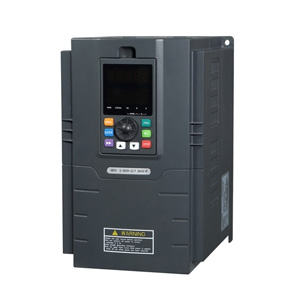Variable Frequency Drive On-load and Non-load Debugging Steps
On-load debugging of VFD system is mainly to test the working conditions of motor when it is loaded, including:
Debugging of variable frequency drive shall follow the rule of “non-load debugging first, then on-load debugging”.
Non-load debugging of variable frequency system is mainly to observe the working conditions of VFD with motor, and then calibrate the rotation direction of motor. Debugging steps are as follows.
- Starting test: increase the working frequency gradually from 0Hz and observe whether the motor can start, and its starting frequency. If the motor is difficult to start, try to increase the starting torque, such as increasing the U/F ratio. If it’s still difficult to start, try to increase the capacity of variable frequency drive or adopt the vector control mode.
- Speed-up test: set the acceleration time to the minimum value according to the load requirement and adjust the given signal to the maximum value, then press the starting button, observe the change of starting current and whether the starting is smooth. If stall occurs, to prevent alarm signal of over-current or tripping caused by excessive starting current, speed-up time should be prolonged appropriately within the allowable range of load or change the form of speed-up curve.
- Speed-drop test: set the operating frequency to the maximum operating frequency, press the stop button to observe the stop process. If stall occurs, to prevent alarm signal of over-current, or tripping caused by over-current, over-voltage, the speed-drop time should be prolonged appropriately or regenerative energy consumption brake resistance should be equipped. The shortest speed-drop time would be different according to whether the VFD contains regenerative energy consumption brake resistance or not. When the output frequency is 0Hz, DC brake should be set or strengthened if there is creeping phenomenon in the traction system.
- Continuous operation test: when the load reaches the maximum value, adjust the operating frequency to the maximum frequency and observe the change of VFD output current. If the output current often exceeds the rated current of VFD, consideration should be given to reduce the maximum operating frequency or load.
- Heating test of motor: adjust the operating frequency to the lowest operating frequency at full load, then keep continuous low-speed operation according to continuous operation time required by load, observe the heating conditions of motor.
- Overload test: test according to the possible overload situation and continuous operation time of load, observe whether the drive system can continue to work.
Debugging of variable frequency drive shall follow the rule of “non-load debugging first, then on-load debugging”.
Non-load debugging of variable frequency system is mainly to observe the working conditions of VFD with motor, and then calibrate the rotation direction of motor. Debugging steps are as follows.
- Connect the VFD output to the motor at first while keeping the motor free of load, power on to observe if there are abnormalities.
- Set the frequency to 0 gear under the non-load mode of keyboard, start the VFD to increase the working frequency slightly, observe the rotation condition of the motor and whether the rotation direction is right. If the direction is reverse, correct it.
- Raise the frequency to the rated frequency and keep the motor running for a period. If everything goes smoothly, choose several common working frequency and keep the motor to operate at these frequencies for a period.
- Decrease the given frequency signal to 0 suddenly (or press the stop button), observe the braking condition of the motor.
- Connect the external input control line and switch to remote control mode, test one by one to check the implementation of external control functions, observe whether the output frequency of VFD is consistent with the remote given value.
Post a Comment:
You may also like:

Variable Frequency Drives
Featured Articles
What is a Variable Frequency Drive
 Variable frequency drive (VFD) is an adjustable speed drive used for motor drive system, control the speed and torque of the AC ...
Variable frequency drive (VFD) is an adjustable speed drive used for motor drive system, control the speed and torque of the AC ...
 Variable frequency drive (VFD) is an adjustable speed drive used for motor drive system, control the speed and torque of the AC ...
Variable frequency drive (VFD) is an adjustable speed drive used for motor drive system, control the speed and torque of the AC ...